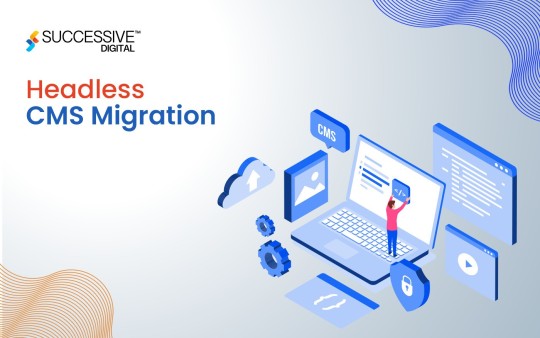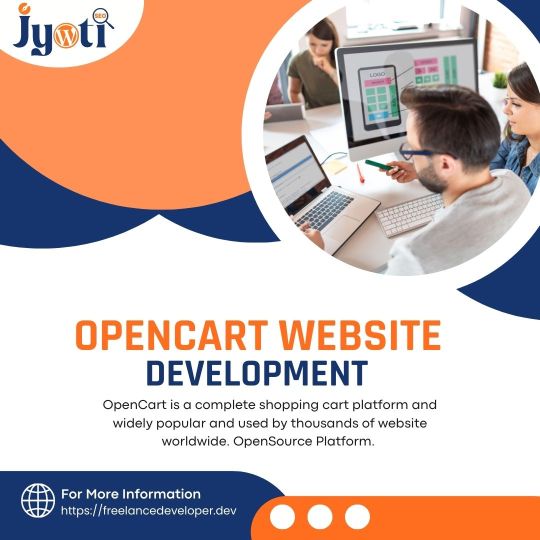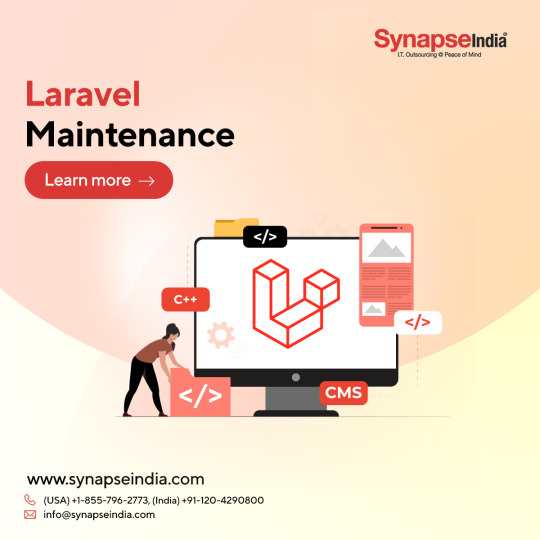#CMS Migration
Explore tagged Tumblr posts
Text
The Ultimate Joomla to WordPress Migration Checklist
Joomla to WordPress migration is a crucial step for website owners seeking enhanced flexibility and user-friendliness. This process involves transferring content, design, and functionality from Joomla to WordPress while ensuring SEO integrity. With careful planning and execution, you can successfully navigate the transition and harness WordPress’s vast plugin ecosystem. Trust HireWPGeeks for expert assistance in your Joomla to WordPress migration journey.
0 notes
Text
Why Choose Drupal Over the Other CMSs
Drupal is a free and open-source web content management system (CMS) written in PHP and distributed under the General Public License. Drupal provides an open-source back-end framework for at least 14% of the top 10,000 websites worldwide and 1.2% of the top 10 million websites—from personal blogs to corporate, political, and government sites. Systems also use Drupal for knowledge management and business collaboration.
As of March 2022, the Drupal community had more than 1.39 million members, including 124,000 users actively contributing, resulting in more than 48,300 free modules that extend and customize Drupal functionality, over 3,000 free themes that change the look and feel of Drupal, and at least 1,400 free distributions that allow users to quickly and easily set up a complex, use-specific Drupal in fewer steps.
So, what factors make Drupal so unique in the market of CMSs and become the preferred choice of most users?
1. Multilingual Platform
The ultimate goal of every website is to grow globally. Multilingual platforms are a stepping stone; you can do this effortlessly with Drupal. When your website interacts with visitors in their native language, it creates a pull for them and keeps them stuck for longer. Also, Drupal will dramatically increase their chances of interacting with the website.
With its unwavering support for multilingual websites, Drupal is the ultimate CMS for building websites that support multiple languages. It allows you to choose from more than 100 languages according to your target geographic area. No matter where your target audience lives, you can effortlessly connect with them through a website built with Drupal.
2. Security Function
In this internet-driven world, people share much personal information online, including bank details, credit card details, and other credentials. What followed was a sharp increase in cybercrime cases. There’s no doubt that today’s consumers follow the best online security practices to protect themselves from online fraud and data breaches, but they also expect top-notch security from the sites they trust.
Therefore, website owners must focus on intelligent web security practices. After all, a cyber attack can get their business into trouble. Once they lose the trust of their customers, no matter what they try, there is no way to get it back.
Drupal is one of the most secure CMSs in the history of the world. It offers unparalleled security features to defend against cyber-attacks and protect customer data. Regular security updates, two-factor authentication, user access control, and database encryption are some of the security features offered by Drupal.
3. Great for SEO
A website’s overall search engine ranking depends on the effectiveness of the SEO practices. If a website owner takes SEO seriously, the website can land on the first page of search engines. As a result, the website will experience exponential visitor numbers and sales growth. Realizing the importance of SEO, most CMSs have started to provide users with multiple SEO tools with the promise of improving website rankings.
If you’re looking for a powerful and versatile content management system that will help your website rank higher in search engine results pages, Drupal is an excellent option. Thanks to its well-optimized codebase and many SEO features, Drupal is one of the best CMSs for SEO. Keyword research, keyword management, content auto-linking, and link management are some of its notable SEO features.
Drupal is a popular content management (CMS) system platform worldwide. If you need an open-source and user-friendly CMS to meet your business needs, Drupal is your first choice. From the perspective of security, Drupal has a dedicated security team to review and respond to the kernel, third-party modules, and themes; Drupal’s modules and themes will be covered by Drupal’s internal security program to ensure that malicious codes are removed. In addition, for ongoing maintenance, and long-term development projects, Drupal development is a lower-cost option. Once the main functions are completed, subsequent expansion and customization will not cost more.
If you want to integrate third-party services into your Drupal site, Shinetech will be your excellent partner. Shinetech developers have rich experience in Drupal development and can help you with the operation and maintenance of your existing Drupal site. The custom development team can also expand network functions by installing existing plug-ins or custom-developing your Drupal plug-ins.
2 notes
·
View notes
Text
#Sitecore to Umbraco migration#Sitecore migration services#Umbraco CMS migration#Sitecore vs Umbraco comparison#Headless CMS migration#Open-source CMS migration services#Enterprise CMS modernization#technology#digital transformation#artificial intelligence#customer experience#techblog#customer experience consulting company#successive digital#blog#customer experience transformation company#successive.tech
0 notes
Text

Flexbox Digital is Trusted HubSpot Solution Partner, that provide expert guidance on CRM, automation, marketing, and integrations helping your business achieve real results. Whether you need CRM setup, marketing automation, or custom integrations, our team ensures you get the most out of HubSpot. Let’s Elevate Your HubSpot Experience with Flexbox Digital: https://www.flexboxdigital.com.au/hubspot-onboarding-and-setup/
#Hubspot Solutions Partner#Hubspot Implementation Agency#Best Hubspot Partners#Hubspot Website Agency#HubSpot Web Design Agency#Hubspot Web Development Agency#HubSpot Website Development#Hubspot CMS Development#Hubspot Website Integration#Hubspot Development Services#Hubspot CMS Integrations#Hubspot CMS Migration
0 notes
Text
CMS Migration
In the fast-paced digital landscape, organizations are constantly seeking ways to adapt, innovate, and enhance their online presence. Central to this endeavor is the Content Management System (CMS), a cornerstone of digital content creation, management, and delivery. However, as technology evolves and business needs change, organizations often find themselves facing the daunting task of CMS migration. Let's embark on a journey to explore the intricacies of CMS migration and uncover best practices for a seamless transition.
#CMS migration specialist#Cloud migration services#Website development#Digital transformation solutions#IT consultant services
1 note
·
View note
Text
Learn how to seamlessly migrate your website from any CMS to WordPress with our comprehensive guide. Discover tips, tools, and best practices for a smooth CMS to WordPress migration.
#website migration#wordpressmigration#CMStoWordPress#wordpress development#CMSMigration#cms#web development
0 notes
Text
Migrating to Headless CMS: Challenges and Opportunities

Migrating to a Headless CMS offers the flexibility of separating content management from the frontend, enabling seamless multi-channel delivery. However, challenges include technical complexity, increased development workload, and potential integration issues with existing systems. Despite these hurdles, the shift provides opportunities for improved scalability, enhanced user experience, and greater adaptability to evolving digital trends.
0 notes
Text
Joomla CMS Development: Powering Your Website with Flexibility and Functionality
Introduction
In the dynamic landscape of web development, choosing the right content management system (CMS) is crucial for creating and maintaining a robust online presence. Joomla is an open-source CMS that is easy to use, flexible, and highly extensible. Joomla CMS Development for a small business or a large organization can be a boon as it offers the best of the features that can be utilized for constructing a robust feature wealthy website. The following article seeks to explore the use of Joomla CMS development and why it is a suitable option for any business.
Customizable and Scalable
Another aspect that really seems to come out well in Joomla, and has been with it right from the beginning is its ability to be so highly customized. This is made possible by the thousands of extensions and templates that exist in Joomla letting Joomla developers design application-specific websites for businesses. As for the uses of Joomla these are in e-commerce, web applications, social network service, and others, because Joomla is very flexible. It means that when launching your business, your Joomla-based website is ready for larger traffic and other additional functions.
User-Friendly Interface
Joomla has been specifically developed with the idea of offering a great number of functions and smooth control over the website even to the inexperienced user. This effectively helps the users to front-end format their work and also manipulate features such as adding and editing content, handling media files, and settings of the panel.
Robust Security
Security is one of the biggest issues which have to be solved for any website and Joomla shines in this aspect. Thanks to the update and security team on Joomla, possible threats are controlled to make sure that the application is well protected. Also, many security extensions are available incorporating the core functionality to make your site even more secure, so your data and your users’ data will be safe.
SEO-Friendly
In this aspect, Joomla is developed with SEO implementation to embrace several approaches supported by a set of instruments and plug-ins. Meta Tags and Links, URLs indeed that are friendly in search engines, and techniques like Google website analysis make your site easily found and placed.
Conclusion
Joomla CMS development from Asia Vulgar provides an opportunity to create and establish an efficient and effective web presence for a company. Therefore, those who want to develop their website using a powerful system can use such options as customization, user-friendly design, protection tools, and Search Engine Optimization in Joomla.
For expert Joomla CMS development services, consider ARP Tech. With a proven track record in delivering tailored web solutions, ARP Tech can help you unlock the full potential of your Joomla-based website, ensuring it meets your unique business needs.
#Joomla Website Development#Joomla CMS Development#Joomla Extension Development#Joomla Migration Services
0 notes
Text
Effortless content migration with minimal downtime and data integrity ensured by The HubOps

Content migration can be a daunting task, but with The HubOps, it becomes an effortless process with minimal downtime and data integrity guaranteed. This blog will explore the intricacies of content migration and provide a comprehensive cms migration checklist and content migration plan to ensure a smooth transition. Using the best website migration tools and cms solutions, we will delve into how The HubOps simplifies cms migration and website content migration while maintaining the highest standards of data integrity.
Understanding CMS Migration
CMS migration involves transferring content from one content management system to another. This process is often necessary when upgrading to a more advanced CMS, rebranding, or improving website performance. However, it comes with challenges such as potential data loss, extended downtime, and compatibility issues. To mitigate these risks, a well-structured content migration plan is essential.
The Importance of a CMS Migration Checklist
A thorough cms migration checklist is crucial for ensuring a successful migration. This checklist should include:
Assessment and Planning: Evaluate the current CMS and identify the goals of the migration. Determine the scope, timeline, and resources required.
Content Inventory: Conduct a comprehensive audit of existing content to decide what should be migrated, archived, or discarded.
Data Mapping: Define how content from the old CMS will map to the new one. This step ensures that all data fields have corresponding destinations.
Backup and Recovery Plan: Create backups of all content and establish a recovery plan to prevent data loss during the migration.
SEO Considerations: Ensure that SEO settings, such as metadata and URLs, are preserved to maintain search engine rankings.
Testing and Validation: Perform thorough testing to identify and resolve any issues before the final migration.
Training and Documentation: Train staff on the new CMS and provide comprehensive documentation to facilitate the transition.
Crafting an Effective Content Migration Plan
An effective content migration plan should be detailed and organized to minimize disruption. Here are the key components:
Pre-Migration Phase:
Content Inventory: As mentioned earlier, a complete content audit is performed.
Stakeholder Alignment: Ensure all stakeholders are on the same page regarding goals and timelines.
Technical Assessment: Evaluate the technical requirements and compatibility of the new CMS.
Resource Allocation: Assign roles and responsibilities to team members.
2. Migration Execution:
Content Export: Export content from the old CMS.
Data Transformation: Convert content to the appropriate format for the new CMS.
Content Import: Import content into the new CMS using reliable website migration tools.
SEO Migration: Transfer SEO settings and ensure URLs are redirected correctly.
3. Post-Migration Phase:
Validation and Testing: Conduct extensive testing to ensure all content is correctly migrated and functional.
Go-Live Plan: Execute the final switch to the new CMS with minimal downtime.
Monitoring and Optimization: Monitor the website for any issues and optimize performance as needed.

The HubOps: Simplifying CMS Migration
The HubOps stands out as a leading provider of cms solutions that streamline the cms migration process. With a focus on minimal downtime and data integrity, The HubOps offers a comprehensive suite of tools and services designed to make website content migration seamless.
Key Features of The Hub Ops
Automated Migration Tools: The HubOps utilizes advanced website migration tools that automate the migration process, reducing manual effort and errors.
Custom Data Mapping: Customizable data mapping features ensure that all content fields are accurately transferred to the new CMS.
Robust Backup Systems: Multiple backup options guarantee that all data is securely stored and can be recovered if necessary.
SEO Preservation: The platform includes tools to preserve SEO settings, ensuring that search engine rankings are maintained post-migration.
Detailed Reporting: Comprehensive reports provide insights into the migration process, highlighting any issues that need to be addressed.
Expert Support: The HubOps offers expert support to assist with any challenges encountered during the migration process.
Ensuring Data Integrity and Minimal Downtime
Data integrity and minimal downtime are critical concerns during website content migration. The HubOps addresses these concerns through:
Pre-Migration Validation: Before migration, content is validated to ensure that all data is complete and correctly formatted.
Real-Time Monitoring: During migration, real-time monitoring tools track the process and alert to any potential issues.
Incremental Migration: Content is migrated incrementally, allowing for continuous operation of the website and reducing downtime.
Post-Migration Checks: After migration, extensive checks are performed to verify data integrity and website functionality.
Problem-Solving Solutions for Common Migration Issues
Even with meticulous planning, issues can arise during cms migration. Here are some common problems and how The HubOps addresses them:
Data Loss: Through robust backup and recovery systems, The HubOps ensures that no data is lost during migration.
Downtime: Incremental migration and real-time monitoring help minimize downtime, keeping the website operational throughout the process.
Compatibility Issues: Custom data mapping and pre-migration validation help identify and resolve compatibility issues before they impact the migration.
SEO Disruption: By preserving SEO settings and implementing proper URL redirects, The HubOps ensures that search engine rankings are not affected.
Best Practices for a Smooth CMS Migration
To achieve a smooth cms migration with The HubOps, consider the following best practices:
Early Planning: Start planning the migration well in advance to address any potential challenges.
Comprehensive Testing: Conduct thorough testing at every stage of the migration to identify and resolve issues promptly.
Clear Communication: Maintain clear communication with all stakeholders to ensure alignment and address concerns.
Training and Support: Provide training and support to staff to facilitate a smooth transition to the new CMS.
Continuous Monitoring: Monitor the website post-migration to quickly identify and resolve any issues that arise.
Conclusion
Content migration can be complex, but with The HubOps, it becomes an effortless process. By following a detailed cms migration checklist and crafting a comprehensive content migration plan, businesses can achieve a seamless transition with minimal downtime and guaranteed data integrity. Utilizing advanced website migration tools and robust cms solutions, The HubOps ensures that cms migration and website content migration are executed flawlessly. Whether upgrading your CMS or rebranding your website, The HubOps provides the expertise and tools needed for a successful migration, ensuring your website remains operational and your data intact.
With The HubOps, businesses can confidently undertake content migration, knowing that every aspect of the process is meticulously managed to ensure success. Embrace the future of effortless content migration and let The HubOps lead the way.
#content migration#data migration#website migration#wordpress to hubspot#hubspot to wordpress#HubOps#The HubOps#CMS#Custom CMS Solutions
0 notes
Text
How to Master Joomla to WordPress Conversion in 9 Steps
Joomla to WordPress conversion is a crucial process for website owners looking to enhance their site’s functionality and user experience. This migration allows you to leverage WordPress’s extensive features, including better SEO capabilities, a vast selection of themes, and a user-friendly interface. With the right tools and guidance, such as those offered by HireWPGeeks, you can seamlessly transition your content and maintain your site’s performance. Embrace the benefits of a powerful CMS and unlock your website's potential today.
#Joomla to WordPress conversion#HireWPGeeks#Website migration#CMS migration#SEO optimization#WordPress themes#Content management systems
0 notes
Text
#drupal migration#drupal migrate#drupal services#drupal migration company#drupal development services#drupal web development services#drupal cms#drupal website maintenance services
0 notes
Text

Need custom integrations, advanced CRM automation or a high-performing HubSpot CMS website? As a Certified HubSpot Development Partner, we specialize in building tailored solutions that streamline your processes, enhance automation, and boost conversions. Contact us for build custom features and optimize your HubSpot environment for maximum efficiency: https://www.flexboxdigital.com.au/hubspot-onboarding-and-setup/
#Hubspot Solutions Partner#Hubspot Implementation Agency#Best Hubspot Partners#Hubspot Website Agency#HubSpot Web Design Agency#Hubspot Web Development Agency#HubSpot Website Development#Hubspot CMS Development#Hubspot Website Integration#Hubspot Development Services#Hubspot CMS Integrations#Hubspot CMS Migration
0 notes
Text
OpenCart Website Development

Looking for a skilled developer for your OpenCart website? Look no further than Jyoti Kumari. With her expertise in OpenCart development, she can create a custom website that meets your unique needs. With her years of experience in the industry, she can deliver high-quality websites that exceed your expectations. Contact her today for OpenCart website development services!
#opencart development#opencart migration#opencart ecommerce#opencart API#opencart theme#opencart CMS
1 note
·
View note
Text

Your Source for Expert Laravel Maintenance and Optimization | SynapseIndia
Enhance your Laravel website's longevity and performance with our tailored Laravel maintenance services. Regular monitoring, updates, and optimizations for uninterrupted user experience.
#laravel maintenance#laravel development company#laravel migration#laravel website#laravel ecommerce website#laravel developer#laravel cms
0 notes
Text
The Ultimate Guide to Ecommerce Development: Tips, Trends, and Best Practices
#Ecommerce platform comparison#Best Ecommerce solutions#Ecommerce development tips#Ecommerce website design trends#Ecommerce website optimization#Custom Ecommerce development#Ecommerce website security#Mobile Ecommerce development#Ecommerce development services#Ecommerce plugin development#Ecommerce UX design#Ecommerce payment gateways#Ecommerce SEO strategies#Ecommerce analytics tools#Ecommerce CMS platforms#Ecommerce website migration#Ecommerce API integration#Ecommerce website performance#Ecommerce conversion rate optimization#pool
1 note
·
View note
Text
Round 3 - Actinopterygii - Acipenseriformes




(Sources - 1, 2, 3, 4)
Order: Acipenseriformes
Common Name: “sturgeons” and “paddlefish”
Families: 2 - Acipenseridae (“sturgeons”) and Polyodontidae (“paddlefish”)
Anatomy: weakly ossified skeletons with the majority of bone being replaced by cartilage, larvae have teeth while adults are toothless or nearly toothless, retain the ability to sense electric fields using ampullae, barbels around mouth for tactile sensing, paddlefish is smooth-skinned with a paddle-shaped rostrum, sturgeons protected by rows of scutes
Diet: mollusks, crustaceans, and small fish (sturgeons), zooplankton (paddlefish)
Habitat/Range: subtropical to subarctic waters in North America and Eurasia
Evolved in: Early Jurassic

Propaganda under the cut:
Several species of sturgeon are harvested for their roe (eggs), which is processed into the luxury food caviar. This has led to serious overexploitation, which combined with other conservation threats, has brought most of the sturgeon species to critically endangered status, at the edge of extinction.
Many sturgeons leap completely out of the water, usually making a loud splash which can be heard half a mile away on the surface and probably farther under water. Why they do this is not known, but suggested functions include group communication to maintain group cohesion, catching airborne prey, courtship display, to help shed eggs during spawning, escape from predators, shed parasites, or to gulp or expel air. Another explanation is that it "simply feels good".
The critically endangered Beluga Sturgeon (Huso huso) (image 1) is the largest Acipenseriform, the largest freshwater fish, and the 3rd largest species of Actinopterygiian. The largest accepted record is of a female taken in 1827, at 1,571 kg (3,463 lb) and 7.2 m (23 ft 7 in) long. Claims of greater length (up to 12 m [39 ft 4 in]); and weight (up to 3,000 kg [6,600 lb]) are disputed and unconfirmed, but not impossible. Beluga of such great sizes are very old and have become increasingly rare in recent decades because of heavy fishing of the species. Today, mature Belugas that are caught are generally 142–328 cm (4 ft 8 in – 10 ft 9 in) long and weigh 19–264 kg (42–582 lb).
The Chinese Paddlefish (Psephurus gladius) was last seen alive in 2003, and is considered to have quietly gone extinct between 2005 and 2010. At over 3 metres (10 feet), possibly up to 7 m (23 ft) in length, it was one of the largest species of freshwater fish. The Chinese Paddlefish spent part of its adult life at sea, migrating up the Yangtze River to spawn. The construction of the Gezhouba and Three Gorges Dams blocked this migration route, and this, combined with overfishing, caused the Chinese Paddlefish to go extinct. The American Paddlefish (Polyodon spathula) (image 2), native to the Mississippi River basin, is now the last living remnant of this 300-million-year-old family.
A study published in 2020 reported a successful hybridization between a Russian Sturgeon (Acipenser gueldenstaedtii) (image 4) and an American Paddlefish (Polyodon spathula), indicating that the two species could breed with one another despite their lineages having been separated for hundreds of millions of years. This has marked the first successful hybridization between members of Acipenseridae and Polyodontidae, and along with some Passeriform hybridizations, is one of the only known instances of animals from two separate families breeding successfully. Accidentally created by Hungarian scientists, the hybrids were dubbed "sturddlefish."
498 notes
·
View notes